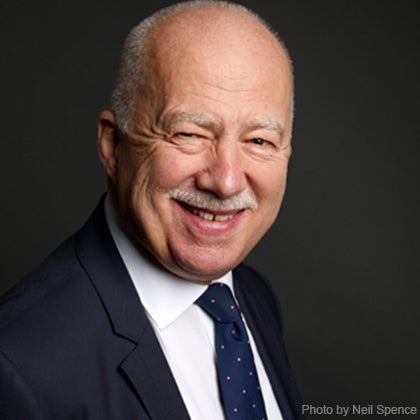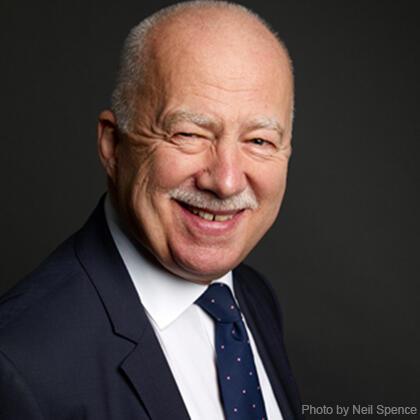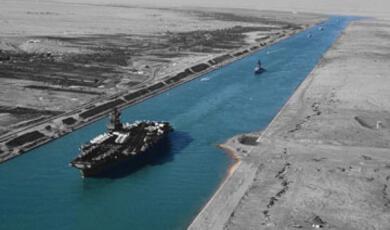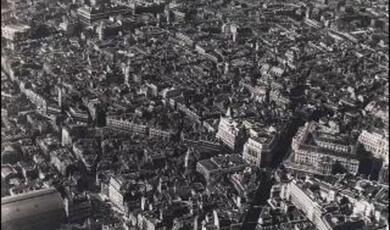Louis XIV: Versailles, Europe and the Arts
Share
- Details
- Text
- Audio
- Downloads
- Extra Reading
Louis XIV saw himself as a patron of the arts, as well as an absolute monarch and warlord. He talked to his favourite artists and writers, including Bernini, Racine, Andre Lenotre the gardener and Charles Lebrun the painter, almost as equals, and made Versailles an arts and entertainment centre rivalling Rome. Versailles’s influence, like the French language, spread across Europe. In his range and passion, Louis XIV was unsurpassed as a patron of the arts, both in his time and later.
Download Text
Louis XIV: Versailles, Europe and the Arts
Dr Philip Mansel
18th January 2023
Patron & Artist
In the course of the longest reign in modern history, from 1643 to 1715 Louis XIV was frequently represented both as a new Alexander the Great, conquering the world, and as a modern Apollo, patron of the arts and sciences. As a warlord, after a glorious start in the 1660’s, he had a mixed record. After 1688 he began losing battles, devastating the Rhineland, bombarding Genoa, Brussels and Algiers, suffering defeats by his Protestant subjects the Huguenots, finally uniting most of Europe against France.
As a patron of the arts, however, he won victory after victory. He loved the arts for themselves – his grandmother was a Medici - and as a means to win admiration in the present and immortality in the future. Since the reign of Saint Louis in the thirteenth century, the French monarchy had tried to outshine all others in its patronage of the arts. By the intensity and diversity of his artistic passions, Louis XIV raised this tradition to new heights. He was determined – as his finance minister Colbert told Bernini in 1665, and as his artistic director the Duc d’Antin repeated in 1708 – to spare nothing to make the arts flourish in France, and he succeeded.
Louis XIV insisted on the highest quality in all the arts, from music to gardens. He personally selected the pictures on his walls, the singers in his choirs (including, unusually for the time, some women), and the sculptures in his gardens. He chose his own musicians like Lully and Couperin and favoured the ‘grand motet’ with choirs and solos for sung masses in his chapel. The music was the best in Europe. Ambassadors said that, when they were posted to other courts, they had to block their ears.
Above all Louis XIV loved architecture – in 1715 on his death-bed he apologised, saying that he had loved it too much. Not only a patron, but himself part of the creative process, he personally directed the design and decoration of the Louvre, Versailles, the Grand Trianon and Marly.
While he was reserved towards most of his courtiers, he treated artists, more than any monarch of his time, almost as equals. The Baroque genius Bernini – especially invited in 1665 by Louis XIV from Rome to Paris, where he was treated like royalty - was allowed to run his fingers through the King’s hair to make it suitable for the bust he was carving. Bernini told the king that for someone who had not seen Italy, he had remarkably good taste.
Andre Le Notre, the great gardener, gave the King, as a friend, a collection of pictures, bronzes and marble busts in 1693. He also received the exceptional honour of visiting the gardens he had designed at Versailles and being shown around them, sitting beside the king, and in a similar wheelchair.
Dress
Louis XIV made Paris the fashion capital of Europe. Partly to help French dress industries, he used his mistress Madame de Montespan, wearing a golden dress covered in point de France lace, as 'a triumphant beauty to display to all the ambassadors', in the words of Madame de Sevigne. He used dress as a weapon, restricting the use of red heels to nobles presented at court and granting jackets covered in a particular pattern of embroidery to fifty favourites.
The King made his own person into a work of art. In order to impress courtiers and foreigners, his coat glittered with embroidery and the jewels he loved. The King’s personal jewel casket, densely covered in gold filigrane, made in Paris in 1676 by Jacob Blanck from Nuremberg, is one of the treasures of the rooms of works of art ‘De Lous XIV a Louis XVI’ in the Louvre.
The King insisted that courtiers buy sumptuous new clothes, covered in embroidery, for royal weddings, in order to help the Paris dress trade, as well as to enhance the splendour of the court. He founded and visited factories making ‘point de France’ lace – generally less flamboyant than Italian – in Arras, Reims and elsewhere. His lace, like his palaces and his furniture , was covered in outward signs of his monarchy – sun-rays, interlaced L’s, fleurs de lys.
Le Mercure Galant, founded in 1672, with fashion plates printed from drawings by the King’s ‘dessinateur ordinaire du cabinet’ Jean Bérain, informed readers where to buy clothes, and how to follow fashions. The first issue of the Vogue of the day was dedicated to Louis XIV and it received a government subsidy.
Ballet
Like previous kings of France, the King loved dancing in ballets. He danced in public until he was thirty, dressed as Apollo, god of the sun, in a kilt of sunrays, or as a shepherdess, or as Alexander the Great. He practiced dancing in his own rooms every day and danced in private until he was sixty. Some ballets were political: in the Ballet of the Night in 1653, after the rebellion of the Fronde, he said:
I have vanquished that python who devastated the world
That terrible serpent whom hell and the Fronde
Had seasoned with a dangerous venom :
That revolt in one word can no longer harm me.
In 1663 he founded the Academie royale de danse, since ‘dance has always been regarded as a necessary art for the exercize and perfection of the body’: it was the gym of the seventeenth century. He also invented choreography. At his suggestion Raoul Feuillet first began noting dance movements on paper, and published Coregraphie ou l’art d’ecrire la danse par caracteres, figures et signes expressifs, dedicated to Louis XIV, in 1701.
Furniture
As early as 1662 the Gobelins factory was established in south-east Paris, where it still is. The King’s First Painter – and, after the King himself, the style master of the reign - Charles Lebrun became its Director in 1663, and the King visited it several times after 1667. Hundreds of workers were employed there making tapestries, showing scenes from the life of the King, or views of his palaces. They also produced furniture, desks or cabinets made of combinations of ebony, rare woods, gilt bronze, marble, pietra dura, mother of pearl and turtle shell, in the elaborate style now called ‘Louis XIV’. Many are decorated with the King’s effigy. Even a key-plate for a door is decorated with the king’s magnificent bewigged profile.
Collections
Louis XIV was a collector, as well as a patron and creator, of works of art. His private apartments behind the state apartments, looking onto the courtyards of Versailles, were filled with his personal collections of engraved gems and cameos, ancient and modern, in special display cabinets. If they had letters of recommendation, and the King was away, visitors to Versailles could usually see these collections.
He also collected bronze sculptures; pieces of porphyry; cups and other objects of jade, emerald, amethyst, sardonyx or lapis-lazuli; and Chinese porcelain mounted with French gilt bronze. Many objects from Louis XIV’s collection can be seen today in an early example of the Louis XIV style from the 1660’s, the Galerie d’Apollon in the Louvre. It is decorated with frescoes, figures of the gods and signs of the zodiac. Louis XIV also acquired classical statues like Apollo and Jupiter from Smyrna, and the Venus d’Arles offered to him by that ancient Roman city in 1684.
Commissioning, inspecting and re-arranging his collection of 21 000 antique and contemporary medals was one of the King’s favourite pastimes. It was the largest in Europe and the modern medals forming L’Histoire du Roi often had laudatory inscriptions such as Rex, Dux et Miles (‘the king, general and soldier’) or Nec Pluribus Impar (‘not unequal to many’, his motto). Medals projected power. Medals boasting of Dutch power in Europe had so maddened Louis XIV that they encouraged him to declare war on the Netherlands in 1672.
Pictures
Louis XIV’s collection of pictures rose from 483 in 1683 to 776 in 1695 and 1478 in 1709. He chose some of the best pictures, including Leonardo’s Mona Lisa, as he chose some of the best classical sculptures, from the Royal Collection in the Louvre to be moved to Versailles.
Charles Lebrun, his Premier Peintre, painted for Louis XIV scenes from the lives of Alexander the Great or Jesus Christ. Alexander enters Babylon in triumph, or receives the family of Darius. Louis XIV in coronation robes and his favourite minister Colbert kneel before the resurrected Jesus Christ. He so admired Lebrun’s work that in 1685 with ‘extraordinary joy’ he interrupted a council meeting to show his ministers Lebrun’s Elevation of the Cross. With sardonic Bourbon humour, displaying knowledge of the Paris art market, he told the painter, shortly before he died in 1690: ‘do not die. Monsieur Lebrun, to make your prices rise, I respect you enough already’. He advised his animal painter Alexandre Desportes on the composition of his pictures, took him on hunts and hung Desportes’ pictures of his favourite dogs in his private apartments.
Louis XIV also commissioned one of the greatest projects in the history of engraving, lasting from 1679 to 1712, called the Cabinet du Roi. It consisted of books of prints, often given to foreign monarchs and ambassadors as gifts, showing pictures from the royal collection, views of French towns and of Versailles.
Literature
The French court created palaces of paper as well as stone. The literature it inspired included sermons by Bossuet denouncing the king’s mistresses, and Fenelon’s Aventures de Telemaque attacking luxury and the rich. Thanks to the King’s favour and courtiers’ love of mockery, Moliere, who was also a court servant looking after the king’s furniture, could be especially daring about class and religious hypocrisy in the plays he wrote to amuse them, such as Tartuffe and Le Bourgeois Gentilhomme. The King said he would praise his favourite writer the great playwright Racine more, if Racine praised him less. Racine became part of the King’s daily life, reading to him when he was ill, writing plays like Athalie and Esther to entertain the court and accounts of the King’s campaigns.
The flood of memoirs, epigrams, letters (none more scathing than those of the King’s German sister law Madame) written at court serves as a counter-blast to the narrative of events in royal propaganda, as well as an education in the psychology of power.
Architecture
After war, buildings were – as Louis XIV regretted on his death bed - his principal passion. Bernini had been lured from Rome to redesign the palace of the Louvre. Colbert, saying that he knew nothing about the spaces for the King’s bedroom, guards and ‘persons of quality’ necessary in a French palace, ensured that he was not used. Instead, for the new East wing of the Louvre in 1666 Louis XIV himself chose one of the most imposing palace façades in Europe, lavishly decorated with a colonnade of coupled Corinthian columns, and covered in ‘L’s, crowns, and sun-bursts.
Finished in 1677, the east wing of the Louvre, like Versailles, convinced contemporaries, that France could surpass Rome, both ancient and modern. Long before it opened as a public museum in 1793 , the Louvre had become, as Louis XIV intended, a palace of the arts as well as a royal palace. It housed part of the royal collections of classical sculpture and paintings , the royal printing-house, royal workshops, artists and furniture-makers like Boulle who made the luxurious bronze and gilt marquetry furniture the King loved. An annual exhibition of new paintings met in what had been the main ballroom. The Academies of Painting and Sculpture and of Inscriptions met in what had been the king’s Bedroom. .
Christopher Wren disliked Versailles on his sole visit in 1665: ‘not an inch within but is crowded with little curiosities of ornament…like a rich Livery’. But he called the Louvre ‘a School of Architecture, the best probably at this day in Europe’. Colbert wanted it to become a global palace, with German, Indian and Persian galleries. Both the Louvre and the adjoining Tuileries palace were extended in the 1660s in an unsuccessful attempt to tempt Louis XIV to remain in Paris.
The Hotel Royal des Invalides was even more imposing than the Louvre. It was a military ‘ideal city’, built two and a half centuries before Le Corbusier, on the south-west edge of Paris. Its fifteen court-yards contained barracks, a monastery, a hospice, a bakery and factories, in addition to the church under a glorious dome.
Started in 1670, it was finished in 1706. At the ceremony of inauguration, the architect Jules Hardouin-Mansart said to the King “I have the honour to present at the feet of Your Majesty the key to this sacred temple which Your piety has erected to the glory of god.
The King congratulated him then, turning to Madame Mansard with a respect for women exceptional for his time, he said:
‘Madame, seeing you here, I cannot refrain from complimenting you for the share that you must take in the glory that Monsieur your husband is receiving today’.
Louis XIV also added to Paris in 1671-77 two triumphal arches celebrating his victories over Spain and the Netherlands, the Portes Saint Denis and Saint Martin (the latter shows the king as a naked Hercules, crowned by victory). After 1680 the Place des Victoires and the Place Vendome were built around statues of the King, which were also erected, according to an official programme ensuring their stylistic unity, in many other cities - Lyon; Dijon; Montpellier; Rennes; Quebec. No doubt in reaction to the humiliations he had suffered during the civil wars of the Fronde (1648-52), Louis XIV commissioned more pictures and statues of himself than any other King of France.
Versailles
The King’s passion for the arts was expressed above all in the gardens and palace of Versailles. Versailles was his personal project, pursued against the advice of Colbert. The King may have been influenced by desire to outshine the magnificent houses of his ministers: such as the city and chateau of Richelieu built by the Cardinal in 1631-43 and the Palais Cardinal in Paris with its Galerie des hommes illustres and the chateau of Vaux built outside Paris by Fouquet. After Fouquet’s imprisonment in 1661, the King employed his best artists and took some of his best sculptures and tapestries for Versailles. Other possible models were the palace of Venaria Reale, started outside Turin by his first cousin Duke Charles Emanuel of Savoy in 1659; or the huge palaces built in the 1530s and 1540s at Chambord and Fontainebleau by his predecessor King Francois Ier.
Versailles, however, was unlike previous palaces. First it contained wings, almost as large as the central block, to house the royal family, the ministers and court officials; second it was decorated with the luxury on which the King insisted, including walls covered in the best French marbles from the Pyrenees and massive amounts of gilt panelling. Above all it was distinguished by the ceaseless round of ‘divertissements’ the King organised there. As early as 14 October 1663, wrote one guest, ‘every day balls, ballets, comedies, music for voices and instruments of every kind, violins, promenades, hunts and other diversions have succeeded each other’. They would not stop – except for a gap of seven years after Louis XIV’s death - until the French revolution. Versailles cannot be understood without thinking of the sound of flutes and violins coming from every part of the palace, courtiers’ apartments as well as the chapel, the King’s apartments and the music of the troops or the hunt in the surrounding streets.
Colbert complained in 1665. ‘Ah, what a pity that the greatest and most virutous prince… should be judged by the measure of Versailles!’ He feared that Le Notre and the architect Le Vau ‘will drag Your Majesty from schemes to schemes to render their works immortal.’. However, even from distant battle fields, Louis XIV personally supervised its construction and decoration, demanding to know ‘the detail in everything’. Charles Perrrault of the Academie des Inscriptions claims that, whenever his architects challenged his wishes, the King said ‘in a loud voice and which appeared inflected with anger: do what you please, but if you destroy it, I will have it rebuilt as it is and without changing anything in it’..
Versailles was finished by 1688. The King’s sister-in-law the Duchesse d’Orleans wrote: ‘if I could describe the splendour with which these rooms are furnished and the amount of silver there is everywhere, I should go on for ever’. Solid silver mirrors, chandeliers, and tables adorned the state apartments until they were melted down after 1689, in a gesture by the King to help pay for his wars. The best surviving French silver in the Louis XIV style is now outside France, made by Protestant craftsmen who had fled Louis XIV’s religious persecutions in France.
The frescoes in the Galerie des Glaces, the largest in Europe, by his Premier Peintre Charles Lebrun and his studio, glorified the King alone, not, like frescoes in other galleries, royal ancestors or the gods of Olympus. From 1682 Versailles became his principal residence – although he continued to use other royal chateaux, such as Compiegne or Fontainebleau, and much of the royal family, household and government remained in Paris. Versailles continued to expand until the end of his reign, even when France faced famine and defeat. In 1699, for example, decorating new rooms for his grand- daughter-in-law the Duchesse de Bourgogne, Louis XIV said: ‘there must be a spirit of youth everywhere’ .
As well as being a royal residence, Versailles functioned as a hunting lodge, a music and dance festival, a fashion parade, a finishing school, an information centre and a military and government headquarters.
There were critical voices. The English diplomat Matthew Prior wrote: ‘his house at Versailles is something the foolishest in the world; he is strutting in every panel and galloping over one’s head in every ceiling’. But Prior’s master, William III, would also be glorified in prints and medals, portraits and frescoes – partly in competition with Louis XIV. In 1701, the English writer John Northleigh, like many other English, praised Versailles:
‘the most beautiful palace in Europe...that [side] which fronts the Garden surpasses all that can be imagined sumptuous ; its Roof glittering with Gold affords a glorious Prospect at a Distance.‘ Inside, the Galerie des Glaces was ‘the noblest that I ever beheld in my Life’. Another, anonymous Englishman, in 1709, called the Gallery ‘of the utmost magnificence’ and Versailles itself a ‘miracle of the World…the finest palace I ever saw.’
Gardens
Gardening, wrote one of Louis XIV’s courtiers the Marquis de Sourches, was ‘one of the King’s great passions…he is always ordering some beautification in the gardens’. He inspected them even in winter when he was over seventy, and it was so cold that his dogs refused to follow him. Despite its bad situation and lack of water supplies, in Versailles, and the gardens surrounding the neighbouring pavilions of Marly and Trianon, built in 1679-84 and 1687-8 respectively, Louis XIV created the largest Baroque landscape in Europe. Long straight avenues, with perspectives stretching to the horizon, alternated with fountains, grottoes, pools, garden rooms in groves, and 800 French marble sculptures of gods, emperors and philosophers, the seasons and the continents. Like his medals, his sculptures linked the King to the classical past which he revered: they showed Apollo, surrounded by muses or driving the chariot of the sun, as well as goddesses like Juno, Latona and Ceres. The ultimate honour for visitors the King wanted to impress was a tour of the gardens of Versailles as the fountains played. Many workmen and soldiers, however, died building aqueducts and diverting rivers, to bring water to Versailles for its fountains.
The King was particularly proud of ‘the river’ at Marly, which he designed himself. It looked like a cascade, but was in reality 52 pools of water, lined with red, green and white marble, descending a hill opposite the main pavilion. In 1702 he placed at the entrance to the park at Marly two magnificent statues of winged horses by Coysevox, now in the Cour Marly in the Louvre.
Tuberoses, hyacinths and daffodils, packed his flower beds, especially round the pavilion of Trianon which he designed himself . The flowers could be changed according to the season, or more frequently, since they were in thousands of pots. Sometimes the scents from the flower were so overpowering that they drove the courtiers out of the garden, back inside the pavilion.
Europe
In the words of the Mercure Galant, at Versailles Louis XIV ‘does the honours of France and shows foreigners the magnificence of his court.’ Like the Louvre today, Versailles served to increase the attraction and prestige of France in Europe.
Louis XIV’s main rival in Europe was William III, King of England and Stadholder in the Netherlands. Even his ambassador the Earl of Portland, who was also ‘Surintendant’ of his gardens, called Marly ‘the most agreeable garden I have seen, and it would greatly please Your Majesty’. In the next reign an Ottoman ambassador was so struck by the gardens at Marly, that he exclaimed that the world was the prison of the faithful, since they did not possess such gardens, but ‘the paradise of the infidel’, who did.
Through the works of art he displayed at Versailles, and the constant entertainments he provided, from balls, concerts, plays and operas, Louis XIV made it a cultural centre, almost rivalling Florence or Rome. Raising France to the artistic level of Italy was stated at the time to be one of the purposes of the palace.
Other monarchs from Peter the Great to William III in England or Joao V in Portugal would try to imitate Louis XIV’s appearance, court, palaces and gardens. Books of engravings, published by the royal press, brought views of Versailles to the courts of Europe. Monarchs built similar palaces and pavilions, such as Peterhof or Hampton court. Museums in Stockholm, Dresden, Munich and London, and Baroque English country-houses like Boughton and Chatsworth, are full of works of art bought by foreign rulers in Paris during Louis XIV’s reign.
The Kings of England and Sweden and the Elector of Saxony also tried to dress like Louis XIV. They ordered clothes – as well as other luxury goods – in Paris through special buyers they maintained there, in addition to their official diplomats. Even his enemy William III, then Stadholder in the Netherlands, wrote to Paris in 1684 to ask for an architect to help him enlarge his main country palace, Het Loo. In May 1697, although France and England had just been at war, the French ambassador organised a ‘divertissement’ called Le Palais des Plaisirs, with musicians and dancers, for William III in a special theatre built next to his modest brick house at Kensington – as if only Frenchmen knew how to organise entertainments.
As in the reign of Louis XIV, Versailles is still a centre of entertainments today and the most visited palace in the world, after the Forbidden City. It will have even more visitors when the park is site of riding and swimming events for the 2024 Olympic. The current exhibition at Versailles on ‘Louis XV: the Passions of a Prince’ shows how his successor continued the artistic passions of Louis XIV, King of France and King of the Arts. Over three hundred years after Louis XIV’s death in 1715, he is still alive at Versailles.
© Professor Mansel, 2023
References and Further Reading
Beaussant, Philippe. Les plaisirs de Versailles : theatre et musique. 1996.
Benoit, Jeremie. Le Grand Trianon : un palais prive a l’ombre de Versailles. 2009.
Berger, Robert. A Royal Passion: Louis XIV as Patron of Architecture. Cambridge NY 1994.
Bresc- Bautier, Genevieve. The Louvre : Architecture and History. 2004.
Andre Charles Boulle, a new style for Europe 1642-1732. exh. Cat. Frankfurt 2011.
Goldfarb, Hilliard T. Richelieu: Art and Power. 2002.
Jones, Colin. Versailles. 2018.
Maral, Alexandre ed. Versailles et l’antique. 2012.
Mansel, Philip. King of the World: the life of Louis XIV. 2019.
Michel, Patrick. Les collections royales francaises. 2008.
Mitford, Nancy. The Sun King: Louis XIV at Versailles. 1970.
Solnon, Jean-Francois. La Cour de France .1987.
Spawforth, Tony. Versailles: a Biography of a Palace. 2010.
References and Further Reading
Beaussant, Philippe. Les plaisirs de Versailles : theatre et musique. 1996.
Benoit, Jeremie. Le Grand Trianon : un palais prive a l’ombre de Versailles. 2009.
Berger, Robert. A Royal Passion: Louis XIV as Patron of Architecture. Cambridge NY 1994.
Bresc- Bautier, Genevieve. The Louvre : Architecture and History. 2004.
Andre Charles Boulle, a new style for Europe 1642-1732. exh. Cat. Frankfurt 2011.
Goldfarb, Hilliard T. Richelieu: Art and Power. 2002.
Jones, Colin. Versailles. 2018.
Maral, Alexandre ed. Versailles et l’antique. 2012.
Mansel, Philip. King of the World: the life of Louis XIV. 2019.
Michel, Patrick. Les collections royales francaises. 2008.
Mitford, Nancy. The Sun King: Louis XIV at Versailles. 1970.
Solnon, Jean-Francois. La Cour de France .1987.
Spawforth, Tony. Versailles: a Biography of a Palace. 2010.
Part of:
This event was on Wed, 25 Jan 2023
Support Gresham
Gresham College has offered an outstanding education to the public free of charge for over 400 years. Today, Gresham College plays an important role in fostering a love of learning and a greater understanding of ourselves and the world around us. Your donation will help to widen our reach and to broaden our audience, allowing more people to benefit from a high-quality education from some of the brightest minds.


 Login
Login







